- Golf
- Gambling Casions
- Bowling and Miniature Golf
- Reif Center for Performing Arts
- Mac Rostie Art Center
- Mississippi Melodie Showboat
- Forest History Center
- Children’s Discovery Museum
- Judy Garland Birthplace Historic House
- Itasca Heritage Center Museum And Judy Garland Exhibit
- Judy Garland Exhibit: A Family Scrapbook
- Blandin Paper Company Tours
- Nordic Ridge Gardens: Strawberry Picking and Pumpkin Patch
- Strawberry and Blueberry Picking
- Hill Annex Mine
- Mesabi Trail
- Taconite Trail
- Edge of the Wilderness National Scenic Byway
- Chippewa National Forest’s "Lost Forty"
- Cut Foot Sioux Ranger Station
- Trout Lake Semiprimitive Non-motorized Area and the Joyce Estate
- Suomi Hills
- Canoe Trips in Itasca County
- White Oak Society, Inc.
- Grand Rapids Gun Club
- Minnesota Shooting Sports Education Center
- Pheasants Plus Hunting Preserve
Itasca County Golf Courses
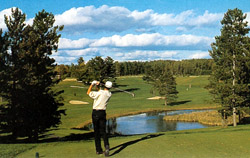 With four 18-hole championship courses and several more nine-hole courses found within Itasca County, you are certain to find a tee-time to suit your needs. Very few northern resort areas offer the many choices we do. Area courses include a wide variety of golf to accommodate all skill levels. For the most enjoyable time, call ahead to set a tee time.
With four 18-hole championship courses and several more nine-hole courses found within Itasca County, you are certain to find a tee-time to suit your needs. Very few northern resort areas offer the many choices we do. Area courses include a wide variety of golf to accommodate all skill levels. For the most enjoyable time, call ahead to set a tee time.
Finally, who says price doesn’t matter? You’ll find that Northwoods golf offers very affordable golf fees with some of the best values in the Midwest.
Eagle Ridge Golf Club
One Green Way, Coleraine
Hwy 169 East, Coleraine
Total Yards: 6,245
Rating/Slope: 69.4 / 121
Instructions Available: Yes
Phone: 218.245.2217
Pokegama Golf Club
3910 Golf Course Road
Grand Rapids
Total Yards: 6,105
Rating/Slope: 68.5 / 117
Instructions available: Yes
Phone 218.326.3444
Sugarbrooke Golf Club
Located at Ruttger’s
Sugar Lake Lodge
Total Yards: 6,545
Rating/Slope: 72.2 / 124
Instructions Available: Yes
Phone: 218.327.1462
Wendigo Golf Club
750 Golf Crest Drive
Grand Rapids
Total Yards: 6,460
Rating/Slope: 70.7 / 129
Blueberry Hills Golf Course
1 mi. N of Deer River on
Hwy. 6, turn E on G.C. Rd.
Total Yards: 3,121
Rating/Slope: 34.6 / 110
Instructions Available: Yes
Phone: 218.743.3626
Golf on the Edge
1.5 miles E of Bigfork
Cty Rd 261 & G.C. Rd
Total Yards: 2,963
Rating/Slope: 66.8 / 104
Instructions available: Yes
Phone 218.743.3626
Swan Lake Golf Club
Rt.1 Box 308 Pengilly
Directly off Hwy. 65
Total Yards: 3,235
Rating/Slope: 34.5 / 116
Instructions Available: No
Phone: 218.885.3543
Instructions Available: Yes
Gambling Casinos
Indian gaming casinos are in abundance in our area. Guests will find Palace Casino in Cass Lake, MN, White Oak Casino in Deer River, MN and Northern Lights Casino in Walker, MN all within easy driving distance.
Bowling and Miniature Golf
Midway Bowling & Mini Golf located on Highway 169 North in Grand Rapids, Minnesota has bowling, a lounge, miniature golf course and batting cages. Fun for the whole family! Call 1-218-326-5950 for hours or for more information.
Rasley’s BlueBerry Bowl located just north of Deer River, Minnesota on Highway 6 has 10 bowling lanes, the Lucky Strike Lounge and a large dining room. Visit their website for hours and more information or call 1-218-246-8048.
Blackduck Bowling Lanes located on Summit Avenue in Blackduck, MN is open to the public. Call them at 218-835-6620 for more information.
Reif Center for Performing Arts
By bringing dance, theater, music and popular entertainment to its stage, the Myles Reif Performing Arts Center provides a stage for performing arts in Northern Minnesota. Completed in 1981, the Reif Center is also dedicated to providing dance instruction to both the serious dance student and the recreational student. The Reif Center is located at 720 Conifer Drive in Grand Rapids – adjacent to the Grand Rapids High School. Click Here to see a calendar of upcoming performances where you can also purchase tickets online.
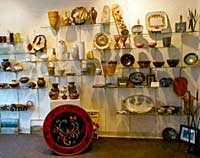 Mac Rostie Art Center
Mac Rostie Art Center
Located in downtown Grand Rapids the Mac Rostie Art Center is a gathering place where artists and community members can share in the belief that art is the heart and soul of a community. Open to the public Monday thru Saturday from 10:00 a.m. to 5:00 p.m. visitors can view exibits, purchase work from local artists or participate in classes such as woodworking, pottery and watercolor. For more information visit their website at: www.macrostieartcenter.org.
Mississippi Melodie Showboat
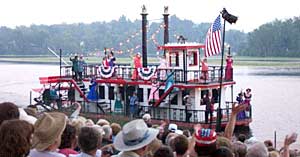 Join the fun when the band plays the opening theme, a riverboat whistle is heard in the distance and the first glimpse of the Mississippi Melodie Showboat is seen around the river’s bend. Visitors are magically carried back a hundred years in time to relive the gaiety and excitement of the Showboat era on the Mighty Mississippi. With banners flying, paddle wheel churning and whistle blowing, the majestic Mississippi Melodie Showboat and her cast have been enchanting crowds in Grand Rapids for 50 years.
Join the fun when the band plays the opening theme, a riverboat whistle is heard in the distance and the first glimpse of the Mississippi Melodie Showboat is seen around the river’s bend. Visitors are magically carried back a hundred years in time to relive the gaiety and excitement of the Showboat era on the Mighty Mississippi. With banners flying, paddle wheel churning and whistle blowing, the majestic Mississippi Melodie Showboat and her cast have been enchanting crowds in Grand Rapids for 50 years.
Mississippi Melodie provides a unique entertainment experience for the audience. Audiences sit in comfortable stadium seating in an outdoor amphitheater and are entertained by a revival of the music, dance and humor of the earlier showboat era. The captain brings Mississippi Melodie to the dock, which then becomes the stage. The length of the show is from 1-1/2 to 2 hours. Each year an entirely new show is written and different performers are featured. Featured are solo singers, specialty numbers and a talented chorus of singers and dancers. Audiences can also look forward to the featured melodrama skit. The Mississippi Timber Cloggers and the Applechords barbershop quartet also appear each year as part of the performance.
This vaudeville variety show is produced on the banks of the beautiful Mississippi River in Grand Rapids the last three weekends of July. This is one event you will make an annual tradition! For more information call (866)336-3426 or visit the Mississippi Melodie Showboat website.
Forest History Center
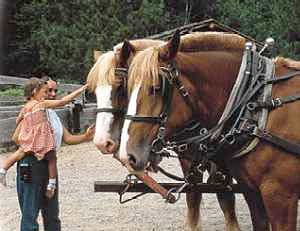 Visitors will step back in time as they walk through a turn-of-the-century logging camp located in Grand Rapids. There they will find a camp blacksmith, saw filer, clerk, cook (often called a cookee) and lumberjacks at the state’s only authentic 1900s logging camp. During your visit, board the moored river “wanigan,” a floating cook shack used when the logs and men headed downstream to the mills. Or, take a seat on the porch of a 1930s Minnesota Forest Service patrolman’s cabin and hear about the ranger’s important work protecting woodland resources. The more adventurous may climb the state’s only 100-foot fire tower with a live interpretive center.
Visitors will step back in time as they walk through a turn-of-the-century logging camp located in Grand Rapids. There they will find a camp blacksmith, saw filer, clerk, cook (often called a cookee) and lumberjacks at the state’s only authentic 1900s logging camp. During your visit, board the moored river “wanigan,” a floating cook shack used when the logs and men headed downstream to the mills. Or, take a seat on the porch of a 1930s Minnesota Forest Service patrolman’s cabin and hear about the ranger’s important work protecting woodland resources. The more adventurous may climb the state’s only 100-foot fire tower with a live interpretive center.
A one-hour guided tour starts at the interpretive building. Whether on the tour or just wandering throughout the camp on your own, interpretive guides dressed in period clothing will encourage you to ask questions of the company clerk, bull cook (camp janitor), saw filer, lumberjacks, barn boss (who cares for the draft horses), the blacksmith and “wood butcher” (carpenter).
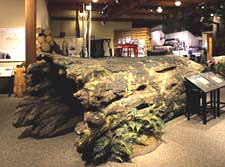 The Forest History Center now boasts a completely renovated interpretive building where exhibits, films and displays help set the stage for your journey through time and help you to understand the story of the people and forests of this area. Some of the new exhibits in the renovated visitor center include a state-of-the-art timber harvester simulator, A 30-seat theater with a multimedia show that demonstrates the force and power of forest fires, a full size all-terrain vehicle, a contemporary log- fun for children to crawl through-and more hands on exhibits and displays. Later take a walk on one of three self-guided forest trails for a view of the Mississippi River and the Northern Minnesota forestland. These trails, also open in the winter, are groomed and track-set for cross-country skiing.
The Forest History Center now boasts a completely renovated interpretive building where exhibits, films and displays help set the stage for your journey through time and help you to understand the story of the people and forests of this area. Some of the new exhibits in the renovated visitor center include a state-of-the-art timber harvester simulator, A 30-seat theater with a multimedia show that demonstrates the force and power of forest fires, a full size all-terrain vehicle, a contemporary log- fun for children to crawl through-and more hands on exhibits and displays. Later take a walk on one of three self-guided forest trails for a view of the Mississippi River and the Northern Minnesota forestland. These trails, also open in the winter, are groomed and track-set for cross-country skiing.
From June 1 through Labor Day the living history features, interpretive building and trails are open Monday through Saturday from 10 a.m. to 5 p.m. and from Noon to 5 p.m. on Sunday. From Labor Day through May 31 the interpretive building and trails are open on weekdays 9 a.m. to 4 p.m. The center is closed on winter holidays. Cross-country ski trails are open daily as snow conditions permit.
Admission is $7 for adults, $6 for senior citizens, and $4 for children ages 6-17. Free for children under age 6 and for MHS members. Different fees may apply for special events. Feel free to pack a picnic lunch and stay all day. The picnic pavilions are open to the public and available for events as well. For more information email: foresthistory@mnhs.org call 218-327-4482 or log on to www.mnhs.org/places/sites/fhc/. The Forest History Center is located near US Highways 169 and 2 at 2609 County Road 76, Grand Rapids, Minnesota 55744.
Children’s Discovery Museum
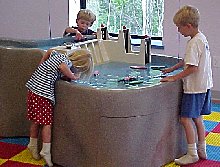 Each year thousands of children visit the Children’s Discovery Museum in Grand Rapids, which offers both permanent and changing educational exhibits. The new Children’s Discovery Museum opened in June, 2003 on Highway 169 South in Grand Rapids and is the perfect place for families with children of all ages to explore a mix of sciences, arts and humanities while sparking a joy of discovery about themselves, where they live and the larger world.
Each year thousands of children visit the Children’s Discovery Museum in Grand Rapids, which offers both permanent and changing educational exhibits. The new Children’s Discovery Museum opened in June, 2003 on Highway 169 South in Grand Rapids and is the perfect place for families with children of all ages to explore a mix of sciences, arts and humanities while sparking a joy of discovery about themselves, where they live and the larger world.
The Children’s Discovery Museum educational exhibits include the Geo Zoom – an interactive exhibit that introduces kids to the geography of North America; the Exchange City – a child-sized town square complete with ten different shops, a Dino Dig, a special Tot Park Maze – made especially for the preschool crowd; and the River Forest featuring Tree-sa, the talking forest tree. A new exhibit features the one-of-a-kind hand-crafted dolls of doll maker extraordinaire Faith Wick.
The River Water Table is a working replica of the Mississippi River Dam that is visible from the bridge on Pokegama Avenue in Grand Rapids. Children can learn about the fundamentals of hydro-physics as they increase the flow of water thru the dam, watching the lights in the hydroelectric plant get brighter and observing the effect on river current as they operate wing dams. In addition to the many exhibits, the art room is open for birthday celebrations or other party events. The CDM Museum Store offers a wide variety of inexpensive kid-themed toys, books and materials as well as Wizard of OZ souvenirs.
From April thru October the Children’s Discovery Museum is open 10 a.m. to 5 p.m, seven days a week. From November thru March, the museum is open Friday and Saturday only from 10 a.m. to 5 p.m. Admission is $8 per person over the age of 1 through Labor Day. $3 per student school discount rate (for 20 or more.)
The Children’s Discovery Museum is located at 2727 US Hwy 169 South (Across from Home Depot), PO Box 724, Grand Rapids, MN 55744. For more information call 218-326-1900, Toll Free: 866-CDM-KIDS (866-236-5437) or visit their website at www.cdmkids.org.
Judy Garland Birthplace Historic House
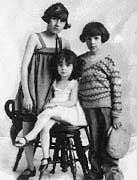 Birthplace of legendary actress Judy Garland, Grand Rapids now boasts the most extensive collection of Judy Garland memorabilia in the United States.
Birthplace of legendary actress Judy Garland, Grand Rapids now boasts the most extensive collection of Judy Garland memorabilia in the United States.
The new Judy Garland Museum, located on highway 169 South in Grand Rapids opened its doors during the 28th Annual Judy Garland Festival in 2003. The museum showcases memorabilia from Garland’s 45-year career.
Although there are thousands of items housed at the museum, one of the most popular items permanently on display is the Wizard of Oz Carriage, which carried Dorothy and her friends on the final leg to see the Wizard.President Abe Lincoln also was a passenger in the famous carriage.Visitors also may view Garland’s Test Dress from the Wizard of Oz, A Winkie Sword from the Wizard of Oz, and An Emerald City Bell-Bottom Coat.Over the Rainbow” was named the top song of the 20th century and visitors can see the “Over the Rainbow” Gold Record presented to Judy Garland as well as Judy Garland’s Special Tony Award and a Microphone from Judy Garland’s TV Show which are all on display.
Founded in 1975 by local artist Jackie Dingmann, the Judy Garland Museum® is one of the oldest museums dedicated to a celebrity in the nation. The new museum offers guests an opportunity to visit, in one location, both Judy’s childhood home and a vast collection of memorabilia from her career.
Attached to the museum is the Judy Garland Birthplace Historic House, whichhas been fully restored to the 1920’s period and allows visitors to see what it looked like when Judy lived there.
The museum and home play host the most visitors from around the world each June during the annual Judy Garland in Grand Rapids.Many of Garland’s friends such as Andy Rooney, the Munchkins and June Alyson have come to the festival, as well as her children and former husband Sid Luft.
From November 1, 2005 through March 31, 2006, The Judy Garland Museum® is open two days a week — Friday and Saturday — from 10 a.m. to 5 p.m. The museum resumes a full seven-day schedule, 10 a.m. to 5 p.m., on April 1, 2006 through October 31, 2006.
General admission for all ages is $8 per person during the Ruby Slippers exhibit, $6 after Labor Day. Age 1 and under free. For more information log on to: www.judygarlandmuseum.com call 1-800-664-JUDY or 218-327-9276, or email: jgarland@uslink.net.
Itasca Heritage Center Museum And Judy Garland Exhibit
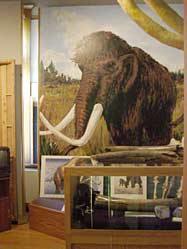 Explore the people, places and resources that make up Itasca County history. The Itasca Heritage Museum captures the flavor of the turn of the century and the stories of the people, places, and resources that shaped this region. Come and explore with us the Woolly Mammoth during the Ice Age, marvel at the resourcefulness of the Ojibwe, the first inhabitants of this area.
Explore the people, places and resources that make up Itasca County history. The Itasca Heritage Museum captures the flavor of the turn of the century and the stories of the people, places, and resources that shaped this region. Come and explore with us the Woolly Mammoth during the Ice Age, marvel at the resourcefulness of the Ojibwe, the first inhabitants of this area.
 Wonder at the variety of cultures represented by the immigrants who came to the new country. See with the eye of a photographer (Eric Enstrom from Bovey, MN) who took the famous picture, “Grace”. Discover how the Mississippi River allowed access to this great land that provided the nation with lumber and iron ore.Lean about the life of CK Blandin, his paper company that still operates today and his contribution to the paper and logging industry.And new to the museum is the Itasca County Barns exhibit which shows a nice collection of barns found throughout the Itasca County area. Each family barn has a written oral history and artifacts to go along with the photographs.
Wonder at the variety of cultures represented by the immigrants who came to the new country. See with the eye of a photographer (Eric Enstrom from Bovey, MN) who took the famous picture, “Grace”. Discover how the Mississippi River allowed access to this great land that provided the nation with lumber and iron ore.Lean about the life of CK Blandin, his paper company that still operates today and his contribution to the paper and logging industry.And new to the museum is the Itasca County Barns exhibit which shows a nice collection of barns found throughout the Itasca County area. Each family barn has a written oral history and artifacts to go along with the photographs.
The Itasca Mercantile Shop at the entrance to the museum includes American Indian goods, old-fashioned candy, regional history books and Wizard of Oz Memorabilia. Central School, a restored grade school originally built in 1895, is now a unique market place which not only features the museum but Auntie Em’s Coffee Shop, a Stain Glass Shop, Yarnworks and other gift shops.
Judy Garland Exhibit: A Family Scrapbook
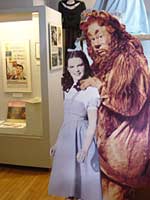 Judy Garland was born Frances Ethel Gumm in Grand Rapids, Minnesota. During their 12 years in this area, the Gumm family operated the New Grand Theater. The story of this family of entertainers is what you will discover in the exhibit “A Family Scrapbook” which includes rare photographs, artifacts of her childhood, family life, and movie career. It’s a must see.
Judy Garland was born Frances Ethel Gumm in Grand Rapids, Minnesota. During their 12 years in this area, the Gumm family operated the New Grand Theater. The story of this family of entertainers is what you will discover in the exhibit “A Family Scrapbook” which includes rare photographs, artifacts of her childhood, family life, and movie career. It’s a must see.
The museum is located on the third floor of the Old Central School in Grand Rapids at the intersection of Highways 169 and 2. It is open from 9:30 a.m. to 5 p.m. Monday – Friday; 10 a.m. to 4 p.m. on Saturdays; and on Sundays during the summer from 10 a.m. to 4 p.m. For more information call 218-326-6431 or visit their website at: www.itascahistorical.com.
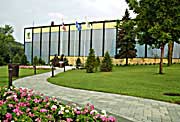 Founded in 1901 in Grand Rapids, Blandin Paper became UPM-Kymmene’s first North American mill in October 1997 and is one of northern Minnesota’s largest employers. Its three paper machines have an annual capacity of about 515,000 short tons (463,500 metric tons), manufacturing No. 3, 4 and 5 grades of paper with basis weights ranging from 30 to 60 pounds. All paper manufactured by Blandin is lightweight coated (LWC), named for its clay-based glossy coating that makes it attractive as a publication paper. In 2001, Blandin’s No. 6 coater set a 24-hour world speed record, attaining an average speed of 5,656 feet per minute. Blandin employees subsequently received UPM-Kymmene Corp.’s “Best Lightweight Coated Productivity Improvement Award” for 2001, placing first in the LWC product category and second among all of UPM-Kymmene’s 35 publication paper machines worldwide.
Founded in 1901 in Grand Rapids, Blandin Paper became UPM-Kymmene’s first North American mill in October 1997 and is one of northern Minnesota’s largest employers. Its three paper machines have an annual capacity of about 515,000 short tons (463,500 metric tons), manufacturing No. 3, 4 and 5 grades of paper with basis weights ranging from 30 to 60 pounds. All paper manufactured by Blandin is lightweight coated (LWC), named for its clay-based glossy coating that makes it attractive as a publication paper. In 2001, Blandin’s No. 6 coater set a 24-hour world speed record, attaining an average speed of 5,656 feet per minute. Blandin employees subsequently received UPM-Kymmene Corp.’s “Best Lightweight Coated Productivity Improvement Award” for 2001, placing first in the LWC product category and second among all of UPM-Kymmene’s 35 publication paper machines worldwide.
Blandin Paper Company Quick Facts: Employs about 850, with another 2,000 jobs indirectly attributable to the company’s local operations; annual papermaking capacity: 515,000 short tons; 2001 sales: $400 million, with an estimated $570 million total economic output; forest land owned and managed: 203,000 acres.
Free guided tours of the mill are offered on Wednesdays, Thursdays and Fridays from 10 am to 3 pm, from the first Wednesday in June through the Friday before Labor Day. Tour guides escort small groups through the mill on a continuous basis. The tour also includes a video of the papermaking process. No children under the age of 12 are allowed, and no open-toed shoes or cameras are allowed. Please note that the ability to climb some stairs is required, and the paper mill is very warm. For more information contact Blandin Paper, 115 SW First St., Grand Rapids, MN 55744 or call 218-327-6302.
Nordic Ridge Gardens: Strawberry Picking and Pumpkin Patch
 For family fun down on the farm visit Nordic Ridge Gardens in Bovey.From late June through late July Nordic Ridge Gardens is known for the succulent berries it produces on the largest strawberry farm in the county. The farm offers berry pickers and buyers 10 acres of berries and provides picking containers and berry boxes, a playground, picnic areas, and restrooms.
For family fun down on the farm visit Nordic Ridge Gardens in Bovey.From late June through late July Nordic Ridge Gardens is known for the succulent berries it produces on the largest strawberry farm in the county. The farm offers berry pickers and buyers 10 acres of berries and provides picking containers and berry boxes, a playground, picnic areas, and restrooms.
 In the fall, The Nordic Ridge Garden features a splendid panorama of thousands of bright orange pumpkins, as well as more than 20 varieties of squash, preserves, and fall decoration. Fun for young and old abounds at the farm in the Pumpkin Barn. Visitors may pet the goats and feed the ducks and geese at the Petting Farm. Test your navigation skills in the 900-straw bale maze in the hayloft of the big red barn, or out in the four-acre cornfield maze. Hayrides are offered on the weekends. Bring a picnic lunch and enjoy the farm atmosphere or the snack bar is open on weekends and holidays during the fall season. The snack bar serves hot-dogs, popcorn, soda pop, juice, caramel apples, fresh baked pies, hot chocolate, cider, coffee and more.
In the fall, The Nordic Ridge Garden features a splendid panorama of thousands of bright orange pumpkins, as well as more than 20 varieties of squash, preserves, and fall decoration. Fun for young and old abounds at the farm in the Pumpkin Barn. Visitors may pet the goats and feed the ducks and geese at the Petting Farm. Test your navigation skills in the 900-straw bale maze in the hayloft of the big red barn, or out in the four-acre cornfield maze. Hayrides are offered on the weekends. Bring a picnic lunch and enjoy the farm atmosphere or the snack bar is open on weekends and holidays during the fall season. The snack bar serves hot-dogs, popcorn, soda pop, juice, caramel apples, fresh baked pies, hot chocolate, cider, coffee and more.
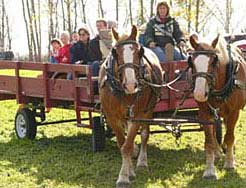 For winter excitement, Nordic Ridge Gardens offers frosty fun for groups that includes a sleigh ride, sliding hill, bon fire and hot chocolate. Outings last 1 ½ hours.
For winter excitement, Nordic Ridge Gardens offers frosty fun for groups that includes a sleigh ride, sliding hill, bon fire and hot chocolate. Outings last 1 ½ hours.
The 160 acre former dairy farm is located, south of the town of Calumet, Minnesota on the west end of the Mesabi Iron Range. Nordic Ridge Gardens is approximately 15 miles east of Grand Rapids and 22 miles west of Hibbing. Hours vary depending on the season so best to call beforehand. Call 247-7726 or toll-free 1-888-FARM-FUN (327-6386). Find out more by visiting them at: www.nordicridge.com.
June and July in northern Minnesota mean succulent strawberries and blueberries. Pick your own or buy them fresh-picked!
 Blueberry Meadows – 34471 Eight Mile Road, Grand Rapids, MN, 55744. Phone: 218-326-0671. Directions: travel south of Grand Rapids on Highway 169 to Eight Mile Road. Pick-your-own blueberries beginning the last week in July.
Blueberry Meadows – 34471 Eight Mile Road, Grand Rapids, MN, 55744. Phone: 218-326-0671. Directions: travel south of Grand Rapids on Highway 169 to Eight Mile Road. Pick-your-own blueberries beginning the last week in July.
Lavalier’s Berry Patch – County Road 441, Grand Rapids, MN. Phone: 218-327-9199. Directions: travel Highway 2 east to SE 7th avenue; turn right onto SE 7th and then take a left onto River Road; follow River Road to County Road 441. Pick-your-own and pre-picked strawberries usually available around July 1 and blueberries around Aug. 1. Call for current prices and to place orders for pre-picked berries.
Hill Annex Mine
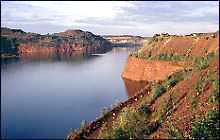 Discover the history of mining on the Iron Range, vintage machinery and the beauty of scenic overlooks at the Hill Annex Mine, the world’s largest open pit mine that is open for tours.
Discover the history of mining on the Iron Range, vintage machinery and the beauty of scenic overlooks at the Hill Annex Mine, the world’s largest open pit mine that is open for tours.
Located in Calumet, Minnesota, just off Hwy. 169 (halfway between Grand Rapids and Hibbing) the history of Hill Annex dates back more than a century. The land was originally leased for mineral exploration in 1892. It was leased again in 1900 for a period of more than 50 years. Mining began in 1913 and continued until 1978. Hill Annex Mine produced 63 million of iron ore during its 60 years of operation. Throughout that time mining technology changed drastically. In the early days, horses provided the power. Eventually steam and then electrical power replaced the horse-drawn equipment. When the high-grade ore finally played out, the mine was sold to the Iron Range Resources and Rehabilitation Board (now Iron Range Resources) for $1. The IRR developed the tour route, the clubhouse into a museum/visitor center, and gave tours of the mine for 10 years. In 1988, the State Legislature made Hill Annex Mine a state park. It is now a national historic site.
Scarce iron deposits may be left behind, but abundant wildlife and vegetation now fill the scarred landscape. The park is a release site for peregrine falcons and home to bald eagles, bear, timber wolves, deer and other wildlife. Trees and plant life have come back to vegetate the area as well.
Three different 1 ½ hour tours conducted at the mine illuminate the history of open pit mining on the Iron Range. The Mine Bus Tour takes visitors (in a fully air conditioned and handicap accessible bus) along scenic overlooks stopping for up close viewing of vintage mining machinery and buildings. The Boat Tour takes visitors to the open water of the Hill Annex Mine, which for 60 years was the sixth largest producer of iron ore in the state. The Fossil Hunting Tour takes visitors to the Cretaceous Ore Pile to hunt for 86 million year old sea fossils.
Tours are conducted Fridays, Saturdays and Sundays from Memorial Day to Labor Day. The Mine Bus Tour begins at 10:00 a.m., the Fossil Tour at 12:30 p.m., and the Boat Tour at 3:00 p.m. All tours are 1 1/2 hours long. Tour busses and facilities are handicap accessible. Museum, gift shop and observation deck are all open year round. Club House/Museum Hours: Memorial Day to Labor Day, 9 a.m. – 4 p.m., Mon. – Thurs. 9 a.m. – 5 p.m., Fri. – Sun. Labor Day to Memorial Day, 9 a.m. – 4 p.m., Mon. – Fri. Times may be subject to change due to budget cuts so call for current hours. For more information call 218-247-7215.
Mesabi Trail
Located in northern Minnesota between the cities of Grand Rapids and Ely, the Mesabi Trail is a premier Minnesota bike trail winding through some of the state’s prettiest regions. When completed, the trail will traverse 132 miles and connect more than 25 communities. A superior paved bike trail that is well-mapped and well-maintained, the Mesabi Trail also makes an interesting walking path. In 2005, 97 miles of trail were planned to be complete and offer convenient accessibility at numerous entry points. The longest paved sections connect Nashwauk and McKinley (51 miles through the communities of Hibbing, Chisholm, Mountain Iron and Virginia), and Grand Rapids to Scenic Highway 7. An additional section of trail between Marble and Pengilly is scheduled for completion in 2006. Once completed, the Mesabi Trail will be one of the longest paved trails in the United States. The trail head is located at the Itasca County Fairgrounds in Grand Rapids.
Partially built on old railroad beds, guests will find a 10-14 foot wide bituminous surface (asphalt paving). Great for summer activities such as biking, inline skating or walking, the trail also offers access to swimming, canoeing, camping and fishing. Winter activities may include cross-country skiing, snowshoeing and winter hiking.
Taconite Trail
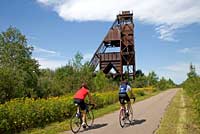 The Taconite State Trail stretches 165 miles from Grand Rapids to Ely and intersects with the Arrowhead State Trail just west of Lake Vermillion. The trail head is located at the Itasca County Fairgrounds in Grand Rapids and the first 6 miles are paved for biking and in-line skating. The remainder of the natural surface trail is used primarily for snowmobiling in the winter. The trail goes through a few areas that have standing water in the summer, however portions of the trail are suitable for horseback riding, hiking, and mountain biking.
The Taconite State Trail stretches 165 miles from Grand Rapids to Ely and intersects with the Arrowhead State Trail just west of Lake Vermillion. The trail head is located at the Itasca County Fairgrounds in Grand Rapids and the first 6 miles are paved for biking and in-line skating. The remainder of the natural surface trail is used primarily for snowmobiling in the winter. The trail goes through a few areas that have standing water in the summer, however portions of the trail are suitable for horseback riding, hiking, and mountain biking.
The Taconite Trail winds through forests of birch and aspen intertwined with pine, leading the visitor by many isolated lakes and streams. From Grand Rapids heading north, you see the impact of the taconite and iron mining industry. The northern portion of the trail terrain is rolling and tree covered as it winds through state and national forest land.
Eight trail waysides and picnic facilities offer scenic vistas of the hills, lakes and rivers of this area. The trail also links three state parks: Bear Head Lake, Soudan Underground Mine, and McCarthy Beach. The landscape in and around Bear Head Lake State Park is very rolling and rocky.
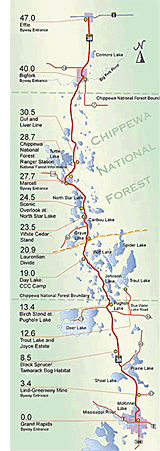 Take the afternoon to drive and enjoy the 47-mile Edge of the Wilderness Scenic Byway that meanders from Grand Rapids north to Effie on Minnesota’s State Highway 38. The region is studded with lakes and thick with aspen, birch, pine and maple trees that pop with color in the fall season. The road winds around 36 lakes, and through state and national forest. The Chippewa National Forest is home to the largest population of bald eagles in the continental United States. Keep your eyes on the sky to see them soaring above the byway. White tailed deer also are known to graze in the fresh grasses along the side of the road.
Take the afternoon to drive and enjoy the 47-mile Edge of the Wilderness Scenic Byway that meanders from Grand Rapids north to Effie on Minnesota’s State Highway 38. The region is studded with lakes and thick with aspen, birch, pine and maple trees that pop with color in the fall season. The road winds around 36 lakes, and through state and national forest. The Chippewa National Forest is home to the largest population of bald eagles in the continental United States. Keep your eyes on the sky to see them soaring above the byway. White tailed deer also are known to graze in the fresh grasses along the side of the road.
Some of the best wildlife viewing takes place when you head off on a back road leading to one of the 1,000 lakes in the county. Or, get out of the car and go for a hike or a ski because there are several trails located just off the road.
Along The Edge of the Wilderness Scenic Byway, there are selected Discovery Sites where you can explore the hidden natural and cultural history of northern Minnesota. As you drive the Byway, look on the east side of the road for green reference point markers approximately one mile apart. These can assist you in navigating your way along the Byway. Also look for The Edge Byway signs and reference numbers along the roadway alerting you to the next Discovery Site just ahead. Take a few minutes or an entire day to navigate all the sites.
In the byway communities of Grand Rapids, Marcell, Bigfork and Effie you can find shopping and the essential travel services you’ll likely need including unique gift and antique shops, restaurants, fuel, food, lodging, public telephones, restrooms and emergency services.
The center for information concerning the Edge of the Wilderness is at the Marcell Ranger Station located approximately 30 miles north of Grand Rapids. There you can ask the Rangers about wildlife, history, park facilities or obtain maps, fishing information, and more.
As you make the meandering drive north be aware of lower speed limits, (the average miles per hour is 40) other traffic and weather conditions which can create slippery roads and black ice. The roadway is the main thoroughfare for residents who live in the northern region of the state, tourists and logging trucks. For more information visit www.scenicbyway.com or call 218-832-3161.
Chippewa National Forest’s “Lost Forty”
Thought to be underwater as part of Coddington Lake, a survey mistake in 1882 saved the land of the Lost Forty.
Actually 144 acres, the Lost Forty, located within the 1.6 million acres Chippewa National Forest is one of the few places in Minnesota to experience truly virgin forest land that never has been logged. Less than 2 percent of Minnesota’s forests are considered old growth today.
Located northwest of Wirt, Minnesota the Lost Forty is found approximately two miles north of the intersection of County Roads 29 and 26 It is somewhat off the beaten path, but worth the drive to see the majestic pines and walk through these pristine woods.
Most of the mature red and white pine is found on the east end of the Lost Forty. These trees are up to 400 years old and between 22 and 48 inches in diameter. Biologically, pine can live up to 500 years. Old growth such as the Lost Forty is full of wildlife habitat, including bald eagles, hawks and woodpeckers, red squirrels, weasels and many more important species.
A one-mile self-guided trail winds its way through the majestic pines of the Lost Forty. A picnic area is also available at the site. Visit www.fs.fed.us/r9/forests/chippewa/recreation/hiking/ for more information.
The Cut Foot Sioux Ranger Station, which was completely restored over a period of four years between 1994 and 1998, is the oldest remaining ranger station building in the Forest Service’s Eastern Region. Listed on the National Register of Historic Places, tours are arranged through the Cut Foot Sioux Visitor Information Center.
To restore the nearly 100-year-old building, the foundation, floor and roof all were rebuilt. Damaged logs were reconstructed and new logs were cut from the very same stand as the original logs. Today the interior is set up as if it were the early 20th century, when Horace Lydick, the first ranger to man the station, and his young bride were sent to man the station in 1908. At the time, there were no roads so they came by boat and built the small cabin by hand. Lydick’s main job was to build roads so loggers could get in to cut the timber.
The ranger station and visitor center is located on State Highway 46 near Cutfoot Sioux Lake and Lake Winnibigoshish north of Deer River, Minnesota. For more information call 218-246-8233 or stop in at the Cut Foot Sioux Visitor Center for a summer tour schedule or to pick up more information about their self-guided tour.
Trout Lake Semiprimitive Non-motorized Area and the Joyce Estate
Trout Lake Semiprimitive Non-motorized Area and the Joyce Estate offer 6,000 acres of forest with 26 miles of shoreline on 11 lakes. Ten miles of old roads and trails provide for hunting hiking or skiing. The rolling terrain provides scenic views over area lakes wrapped with maple, aspen, birch and scattered pine. Click Here for map.
In the 1880s, William T. Joyce came to the area and started buying land and timber. The area was logged in the early 1900s and the logs were floated out through the chain of lakes to the prairie river and then to the Mississippi River. About 1918, the heir to the family fortune originating in lumber taken from northern Minnesota, David Joyce of Chicago, surveyed the area around Trout Lake with the intention of building a hunting camp. Over the next 17 years he built a 4,500 acre private resort with 40 buildings, a golf course, private telephone line and airplane hangar. The Joyce Family called this place “Nopeming” (meaning place of rest in Ojibwe). The estate operated as a plush private resort for the Joyce Family until 1972 when it was sold to the Nature Conservancy. The Forest Service subsequently acquired it in 1973.
Visitors can tour the grounds of the Joyce Estate and view the rustic log architecture and stickwork characteristic of the Adirondack tradition. The Joyce Estate is located 13 miles north of Grand Rapids, one mile east of the intersection of County Road 60 and State Highway 38.
Suomi Hills
The remote setting of the Suomi Hills semi-primitive nonmotorized area is made up of rolling hills, clear lakes and some of the most spectacular fall color in the area. There are 21 miles of trail, numerous small lakes and several primitive campsites for day or overnight hiking, biking, skiing and canoe trips. The rolling topography offers cross country and mountain bike trails for intermediate and advance skiers and bikers. The trails are groomed and track-set in the winter and mowed in the summer.
North Suomi Hills is the site of the Day Lake Civilian Conservation Camp (CCC), which became a prisoner of war camp during World War II. Suomi Hills is located 14 miles north of Grand Rapids on the Edge of the Wilderness Scenic Byway (State Highway 38).
Canoe Trips in Itasca County
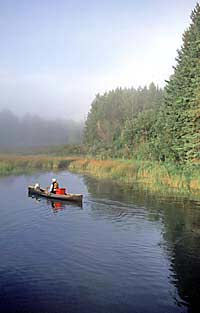 Itasca County is an idyllic destination for canoeing enthusiasts.
Itasca County is an idyllic destination for canoeing enthusiasts.
The Big Fork River flows north to the Rainy river. Most of the river is easy to canoe with several areas of Class I rapids. There are two spectacular water falls that need to be portaged by all but the most experienced paddlers; Little American Falls (Class III-IV) and Big Falls (Class IV-VI).
From Cass Lake to the Vermillion River, this segment of the river consists mostly of marshlands. The area has a rich history and provides great opportunities for viewing wildlife. Paddling skills for marshy areas and for making sharp turns are needed for this stretch of the river but no special skills for paddling through rapids are required. This part of the river is among its first 420 miles which is denoted as the Mississippi Headwaters River Trail.
Recreational canoe enthusiasts enjoy the Prairie River. Much of this stream is located in Savanna State Forest which was once part of an important portage route during fur trade era.
Bigfork River Canoe Outfitting located at the junction of Main Street & Highway 38 in Bigfork, MN offers canoe rental and shuttle service as well as tents and other camping gear. Also serves Rice River. Call 218-743-3274 for more information.
God’s Country Outfitters located on Highway 38 north of Grand Rapids rents canoes and equipment. For rates and reservations call 1218-326-9866.
White Oak Society, Inc.
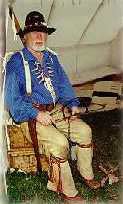 The year is 1798 and the fur trade is booming in the upper reaches of the Mississippi River in the northwoods of Minnesota. Minnesota will not actually become a state for another 60 years but today the Norwesters, gentlemen, traders and Anishanabe are all gathered for the annual rendezvous at the White Oak Fur Post.
The year is 1798 and the fur trade is booming in the upper reaches of the Mississippi River in the northwoods of Minnesota. Minnesota will not actually become a state for another 60 years but today the Norwesters, gentlemen, traders and Anishanabe are all gathered for the annual rendezvous at the White Oak Fur Post.
Members of the White Oak Society operate the White Oak Fur Post. The White Oak Society provides “living history” interpretations of the fur trade era within the Great Lakes region. Along with the White Oak Fur Post, the society operates The White Oak Learning Centre which houses The Great Hall, The Rick Balen Library, The White Oak Society Office. The Learning Centre also offers the opportunity for a variety of educational programs for youths and adults alike which supports their goal to expand today’s horizons with a “hands on” experience of the past.
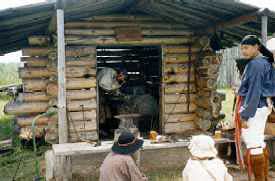 Volunteers and a part-time staff of interpreters, portray authentic characters of the fur trade at the White Oak Fur Post and in communities throughout the region. By portraying the lifestyle of the people from the era, the food they eat, the clothes they wear and the language they speak, White Oak Society members help visitors learn about the actual working and living conditions of the time period.
Volunteers and a part-time staff of interpreters, portray authentic characters of the fur trade at the White Oak Fur Post and in communities throughout the region. By portraying the lifestyle of the people from the era, the food they eat, the clothes they wear and the language they speak, White Oak Society members help visitors learn about the actual working and living conditions of the time period.
The 18th Century Fur Post comes alive each year during the first full weekend of August when the White Oak Society sponsors the White Oak Rendezvous and Festival. The event includes a participant family camp that allows reenactors and the public an opportunity to relive the vibrancy and ambiance of a thriving Northwest Company Fur Post.
The fur post not only bustles during the summer months, but in January holds the Annual White Oak Sled Dog Classic which showcases classic fur trade dogs in its races. Teams can compete in a 120-mile, 60-mile or a 40-mile race for beginners. Even if you are not a sled dog racer there also are events for the children and whole family. Other events include sled dog demos/lessons, ski-joring demos/lessons, cross-country skiing trails, and many more winter outdoor activities.
The White Oak Fur Post is located north of Deer River, Minnesota on Highway 6 North. For more information call them at 218-246-9393 or email them: whiteoak@paulbunyan.net or log on to www.whiteoak.org.
Grand Rapids Gun Club
Open to the public, April through September The Grand Rapids Gun Club has recently expanded to accommodate eight trap fields, four skeet fields, a duck tower, and a new Hunter’s Clays five stand course. Shooters of all skill levels are welcome. New shooters can find on site instruction by certified instructors; youth and women’s classes; and loaner firearms available for use. The club offers a large welcoming clubhouse and friendly atmosphere for league, individual, and tournament shooting. Ammunition, clothing and accessories available for sale on site. The Gun Club also plans registered skeet shoots every Thursday, mid-June through mid-August. Check the calendar of events for additional tournaments and events. The Grand Rapids Gun Club hours are Tuesdays & Wednesday from 3:30 p.m. to dark and Thursdays from Noon to dark and Saturdays & Sunday from Noon to 5:00 p.m. The club is located at 723 Peterson Road in Grand Rapids. Contact them by phone at 218-326-3348 or by mail at: Grand Rapids Gun Club, PO Box 911, Grand Rapids, MN 55744.
Minnesota Shooting Sports Education Center
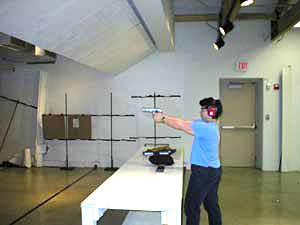 Located on 122 acres surrounded by forestland the MSSEC is open to the public for educational training, train the trainer programs, 4-H Shooting Sports, NRA programs, Youth Firearms Safety, Minnesota Advanced Hunter Education, and supervised recreational shooting. The twelve lane, 50-meter range provides shooters with state-of-the-art equipment and educational facilities. MSSEC specializes in airgun, archery, and small bore rifle, although the range can handle handguns up to 50 calibers. The outdoor 3-D archery range is realistically situated in a wooded setting with hunting style shots from elevated stands, ground blinds, and even an African game at a water hole. Beginners and experienced shooters both benefit from MSSEC’s firearm rental program which allows shooters to try a variety of firearms before making a purchase. A visit to MSSEC makes a great side trip for vacationers or business travelers.
Located on 122 acres surrounded by forestland the MSSEC is open to the public for educational training, train the trainer programs, 4-H Shooting Sports, NRA programs, Youth Firearms Safety, Minnesota Advanced Hunter Education, and supervised recreational shooting. The twelve lane, 50-meter range provides shooters with state-of-the-art equipment and educational facilities. MSSEC specializes in airgun, archery, and small bore rifle, although the range can handle handguns up to 50 calibers. The outdoor 3-D archery range is realistically situated in a wooded setting with hunting style shots from elevated stands, ground blinds, and even an African game at a water hole. Beginners and experienced shooters both benefit from MSSEC’s firearm rental program which allows shooters to try a variety of firearms before making a purchase. A visit to MSSEC makes a great side trip for vacationers or business travelers.
The USA Olympic Shooting team coach, Dan Durben, after training with the Olympic rifle team, proclaimed MSSEC one of the finest shooting centers in the nation. The MSSEC is located at 483 Peterson Road in Grand Rapids and is open to the public. To schedule a visit or for more information visit their website at: www.mssec.org or call 218-327-0583.
Pheasants Plus Hunting Preserve
Pheasants Plus offers a fun and challenging 50 target Sporting Clays course and new five stand course. Friendly atmosphere and handicapped accessible clubhouse welcome shooters of all skill levels. Clothing, ammunition, and supplies available on site. Guided pheasant hunts are a popular outing and should be booked in advance to ensure availability. Dogs are available on site or you are welcome to bring your own dog. The preserve is open to the public but hours vary by season. In the summer the preserve is open Tuesdays and Thursdays from 4 p.m. to dark and on Saturdays and Sundays from 10 a.m. to dark. Pheasants Plus is located at 14893 Sago #4 in Warba, Minnesota. For more information log on to www.pheasantsplus.com or to make a reservation call 218-492-4450.
